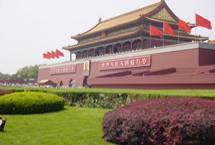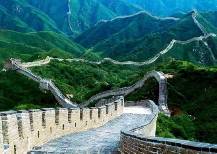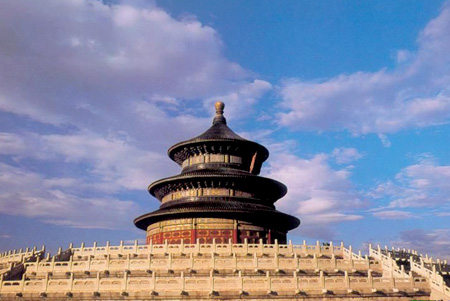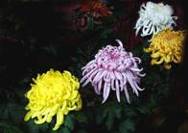| BEIJING CITY, CHINA
 Beijing
is the capital of the People's Republic of China. It is not only the
nation's political center, but also its cultural, scientific and
educational heart as well as a key transportation hub. Beijing has
served as a capital of the country for more than 800 years. The city
has many places of historic interest and scenic beauty, including
the Forbidden City--the largest and best-preserved ancient
architectural complex in the world; the Temple of Heaven--where Ming
and Qing emperors performed solemn rituals for bountiful harvests;
the Summer Palace--the emperors' magnificent garden retreat; the
Ming tombs--the stately and majestic mausoleums of 13 Ming Dynasty
emperors; and the world-renowned and genuinely inspiring Badaling
section of the Great Wall. Large-scale construction has brought
great changes to Beijing since the founding of the People's Republic
of China in 1949 that adds more and more new attractions to the
mysterious old city. Beijing
is the capital of the People's Republic of China. It is not only the
nation's political center, but also its cultural, scientific and
educational heart as well as a key transportation hub. Beijing has
served as a capital of the country for more than 800 years. The city
has many places of historic interest and scenic beauty, including
the Forbidden City--the largest and best-preserved ancient
architectural complex in the world; the Temple of Heaven--where Ming
and Qing emperors performed solemn rituals for bountiful harvests;
the Summer Palace--the emperors' magnificent garden retreat; the
Ming tombs--the stately and majestic mausoleums of 13 Ming Dynasty
emperors; and the world-renowned and genuinely inspiring Badaling
section of the Great Wall. Large-scale construction has brought
great changes to Beijing since the founding of the People's Republic
of China in 1949 that adds more and more new attractions to the
mysterious old city.
Location
 Beijing
is located on the western coast of China on the Pacific Ocean.
Beijing stands at the northern tip of the North China Plain.
Tian'anmen Square in the center of Beijing is situated at 39O56'
North Latitude and 116O20' East Longitude. Beijing lies at
approximately the same latitude as Philadelphia in the U.S. and
Madrid in Spain. The city is 39% flat land and the other 61% is
quite mountainous area. Beijing is surrounded by the Yanshan
Mountains on the west, north and east while the small alluvial plain
of the Yongding River lies to its southeast. Beijing faces the Bohai
Sea, and the area is also called the Beijing Bay. Beijing
is located on the western coast of China on the Pacific Ocean.
Beijing stands at the northern tip of the North China Plain.
Tian'anmen Square in the center of Beijing is situated at 39O56'
North Latitude and 116O20' East Longitude. Beijing lies at
approximately the same latitude as Philadelphia in the U.S. and
Madrid in Spain. The city is 39% flat land and the other 61% is
quite mountainous area. Beijing is surrounded by the Yanshan
Mountains on the west, north and east while the small alluvial plain
of the Yongding River lies to its southeast. Beijing faces the Bohai
Sea, and the area is also called the Beijing Bay.
Area: Greater Beijing has an area of
16,808 sq km.
Climate
The climate in Beijing is of the continental type, with cold and dry
winters, due to the Siberian air masses that move southward across
the Mongolian Plateau. The summers are hot owing to warm and humid
monsoon winds from the southeast bringing Beijing most of its annual
precipitation. January is the coldest month and July is the warmest.
Winter usually begins towards the end of October. The summer months,
June to August, are wet and hot with about 40% of the annual
precipitation.
 Time Time
Time used in Beijing and all over China is called Beijing Standard
Time. It is 8 hours ahead of Greenwich Mean Time (GMT + 8), and 13
hours ahead of New York time.
Population
17.4 million (including just over 12 million official residents in
the household register and 5.4 million in the floating population)
Ethnic groups
The permanent residents of Beijing come from all of China's 56
ethnic groups. The Han nationality accounts for 96.5% of the total.
The other 55 ethnic minorities claim a population of more than
300,000, most of them are from Hui, Manchu, and Mongolian
nationalities.
Economy
From 2001 to 2006, Beijing's economy grew at an annual rate of
12.2%, which was 1.4 percentage points higher than the economic
growth rate between 1997 and 2001. From January to September in
2007, economic growth rate in Beijing reached 12.6%. The per capita
GDP in Beijing (based on the city's permanent resident population)
has climbed from 3,000 US dollars to 6,331 US dollars. Based on the
criteria issued by the World Bank, Beijing's socio-economic
development is graded as at the upper-middle level in the world. In
2006, the average annual wage for Beijing city workers was 40,117
yuan, which was 20,962 yuan more than in 2001, increasing by 109.4%.
If inflation factor is allowed for, annual wage increase was 15.7%
in real terms.
Statistics show that in 2006, Beijing
residents' annual disposable income per capita reached 19,978 yuan,
increasing by 72.6% from 2001. Allowing for inflation factor, the
actual growth of people's annual disposable income reached 11.1%.
According to the standards released by the Food and Agriculture
Organization of the United Nations, this shows that Beijing
residents' living standards have passed the "well-off" standard to
reach the "relatively prosperous" stage. Beijing residents'
consumption structure has improved greatly. Nowadays, people in the
capital spend more on buying luxury items, such as cars, houses, or
things related with leisure and entertainment activities.
City Flowers
In the spring of 1987, delegates to the Sixth Session of the Eighth
Municipal People's Congress, meeting in the Great Hall of the
People, overwhelmingly approved the scholar tree and oriental
cypress as the official city trees, the Chinese rose and the
chrysanthemum as Beijing's official city flowers. The rose, a
Chinese native, has been cross-bred many times, but it still has
half of the original Chinese strain. Known as Perpetual Spring,
Monthly Red, Snow Challenger and Victorious, it is fast growing,
regenerates easily and is graceful and long blooming (May to
October). The chrysanthemum has many names and varieties. In Beijing
potted chrysanthemums may be seen year round. They flower in summer
and fall naturally but can be forced to bloom any time of year.
During the Qing dynasty, there were 400 rare strains of
chrysanthemum. Beijing's flora-culturists now boast more than 1000
varieties.


City trees
 The
stately cypress symbolizes the courage and strength of the Chinese
people, their simple, hard working nature and their defiance in the
face of aggression. This Plateaus Orientals, or Oriental Arborvitae,
can grow as tall as 20 meters. Some of those in Zhongshan Park were
planted as long as 1,000 years ago during the Liao Dynasty. The
scholar tree is a symbol of good fortune, joy and well-being. Dating
back to the Qin and Han dynasties Sophia Japonica were planted
extensively at the Tang Dynasty Imperial Palace in Chang'an. At
Beihai Park an ancient specimen in the courtyard of the Painters
Corridor, is believed to have been planted during the Tang Dynasty,
before 907. Another ancient scholar tree near the Broken Bridge in
the Forbidden City is said to have been planted before 1125. Both
are well adapted to Beijing's cold, dry winter, hot and dry summer,
and alkaline soil. The
stately cypress symbolizes the courage and strength of the Chinese
people, their simple, hard working nature and their defiance in the
face of aggression. This Plateaus Orientals, or Oriental Arborvitae,
can grow as tall as 20 meters. Some of those in Zhongshan Park were
planted as long as 1,000 years ago during the Liao Dynasty. The
scholar tree is a symbol of good fortune, joy and well-being. Dating
back to the Qin and Han dynasties Sophia Japonica were planted
extensively at the Tang Dynasty Imperial Palace in Chang'an. At
Beihai Park an ancient specimen in the courtyard of the Painters
Corridor, is believed to have been planted during the Tang Dynasty,
before 907. Another ancient scholar tree near the Broken Bridge in
the Forbidden City is said to have been planted before 1125. Both
are well adapted to Beijing's cold, dry winter, hot and dry summer,
and alkaline soil. |

 Beijing
is the capital of the People's Republic of China. It is not only the
nation's political center, but also its cultural, scientific and
educational heart as well as a key transportation hub. Beijing has
served as a capital of the country for more than 800 years. The city
has many places of historic interest and scenic beauty, including
the Forbidden City--the largest and best-preserved ancient
architectural complex in the world; the Temple of Heaven--where Ming
and Qing emperors performed solemn rituals for bountiful harvests;
the Summer Palace--the emperors' magnificent garden retreat; the
Ming tombs--the stately and majestic mausoleums of 13 Ming Dynasty
emperors; and the world-renowned and genuinely inspiring Badaling
section of the Great Wall. Large-scale construction has brought
great changes to Beijing since the founding of the People's Republic
of China in 1949 that adds more and more new attractions to the
mysterious old city.
Beijing
is the capital of the People's Republic of China. It is not only the
nation's political center, but also its cultural, scientific and
educational heart as well as a key transportation hub. Beijing has
served as a capital of the country for more than 800 years. The city
has many places of historic interest and scenic beauty, including
the Forbidden City--the largest and best-preserved ancient
architectural complex in the world; the Temple of Heaven--where Ming
and Qing emperors performed solemn rituals for bountiful harvests;
the Summer Palace--the emperors' magnificent garden retreat; the
Ming tombs--the stately and majestic mausoleums of 13 Ming Dynasty
emperors; and the world-renowned and genuinely inspiring Badaling
section of the Great Wall. Large-scale construction has brought
great changes to Beijing since the founding of the People's Republic
of China in 1949 that adds more and more new attractions to the
mysterious old city. Beijing
is located on the western coast of China on the Pacific Ocean.
Beijing stands at the northern tip of the North China Plain.
Tian'anmen Square in the center of Beijing is situated at 39O56'
North Latitude and 116O20' East Longitude. Beijing lies at
approximately the same latitude as Philadelphia in the U.S. and
Madrid in Spain. The city is 39% flat land and the other 61% is
quite mountainous area. Beijing is surrounded by the Yanshan
Mountains on the west, north and east while the small alluvial plain
of the Yongding River lies to its southeast. Beijing faces the Bohai
Sea, and the area is also called the Beijing Bay.
Beijing
is located on the western coast of China on the Pacific Ocean.
Beijing stands at the northern tip of the North China Plain.
Tian'anmen Square in the center of Beijing is situated at 39O56'
North Latitude and 116O20' East Longitude. Beijing lies at
approximately the same latitude as Philadelphia in the U.S. and
Madrid in Spain. The city is 39% flat land and the other 61% is
quite mountainous area. Beijing is surrounded by the Yanshan
Mountains on the west, north and east while the small alluvial plain
of the Yongding River lies to its southeast. Beijing faces the Bohai
Sea, and the area is also called the Beijing Bay. Time
Time

 The
stately cypress symbolizes the courage and strength of the Chinese
people, their simple, hard working nature and their defiance in the
face of aggression. This Plateaus Orientals, or Oriental Arborvitae,
can grow as tall as 20 meters. Some of those in Zhongshan Park were
planted as long as 1,000 years ago during the Liao Dynasty. The
scholar tree is a symbol of good fortune, joy and well-being. Dating
back to the Qin and Han dynasties Sophia Japonica were planted
extensively at the Tang Dynasty Imperial Palace in Chang'an. At
Beihai Park an ancient specimen in the courtyard of the Painters
Corridor, is believed to have been planted during the Tang Dynasty,
before 907. Another ancient scholar tree near the Broken Bridge in
the Forbidden City is said to have been planted before 1125. Both
are well adapted to Beijing's cold, dry winter, hot and dry summer,
and alkaline soil.
The
stately cypress symbolizes the courage and strength of the Chinese
people, their simple, hard working nature and their defiance in the
face of aggression. This Plateaus Orientals, or Oriental Arborvitae,
can grow as tall as 20 meters. Some of those in Zhongshan Park were
planted as long as 1,000 years ago during the Liao Dynasty. The
scholar tree is a symbol of good fortune, joy and well-being. Dating
back to the Qin and Han dynasties Sophia Japonica were planted
extensively at the Tang Dynasty Imperial Palace in Chang'an. At
Beihai Park an ancient specimen in the courtyard of the Painters
Corridor, is believed to have been planted during the Tang Dynasty,
before 907. Another ancient scholar tree near the Broken Bridge in
the Forbidden City is said to have been planted before 1125. Both
are well adapted to Beijing's cold, dry winter, hot and dry summer,
and alkaline soil.